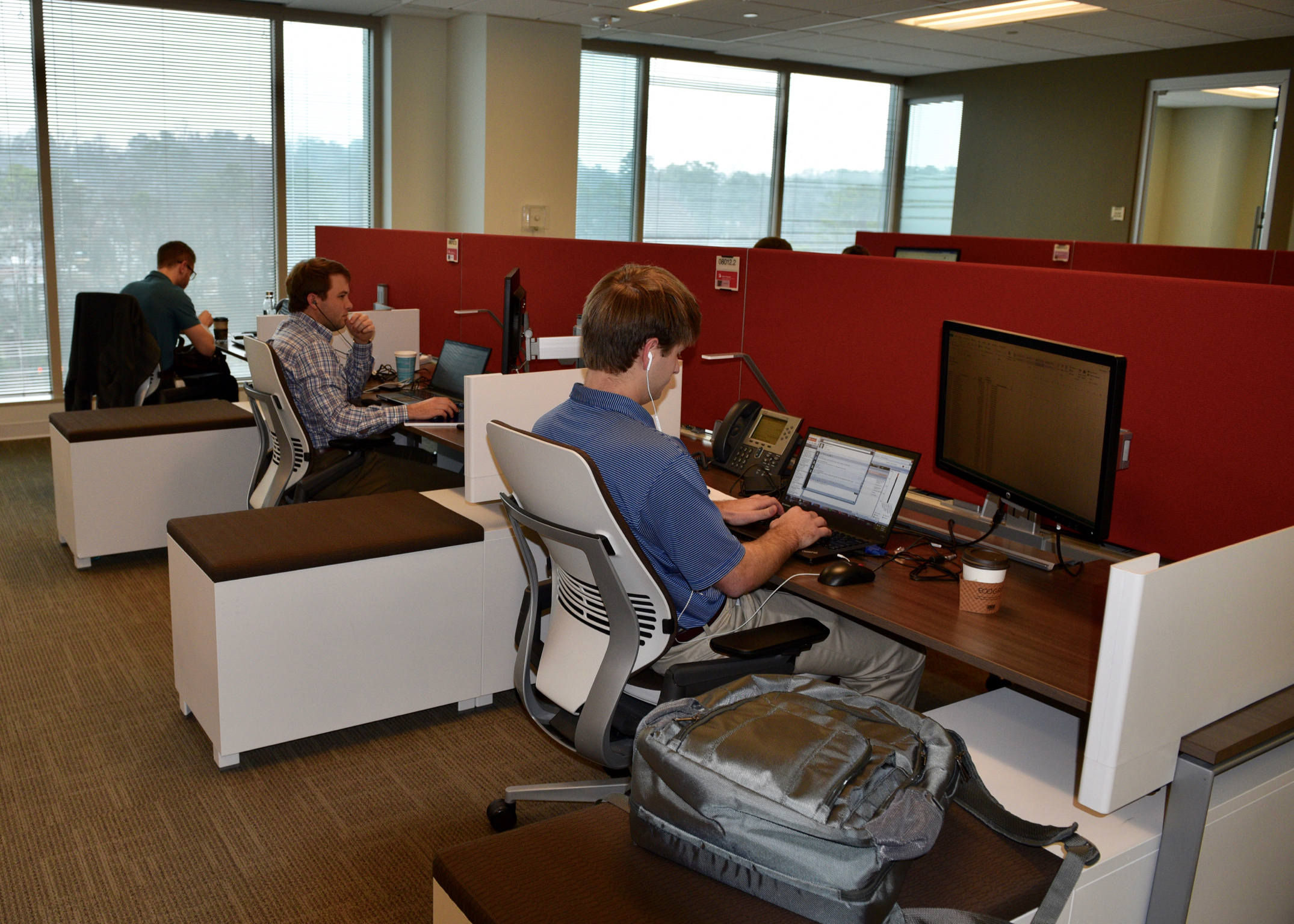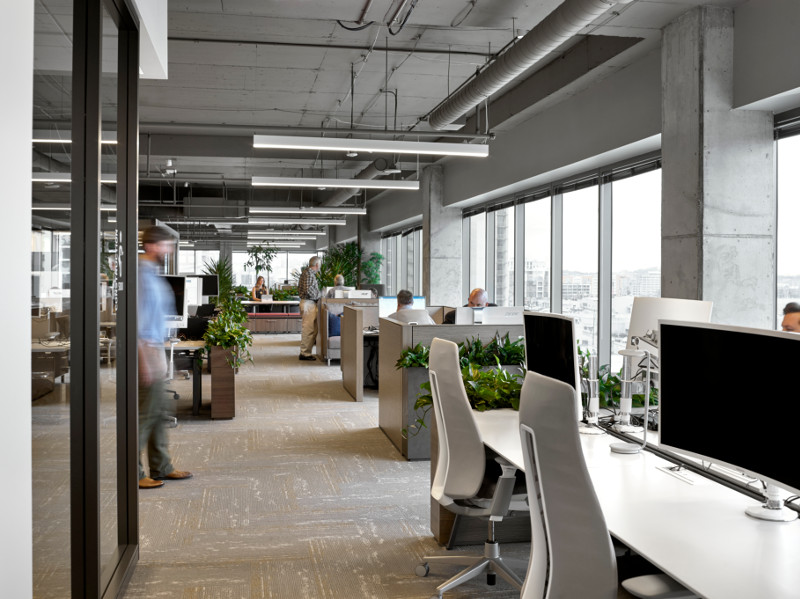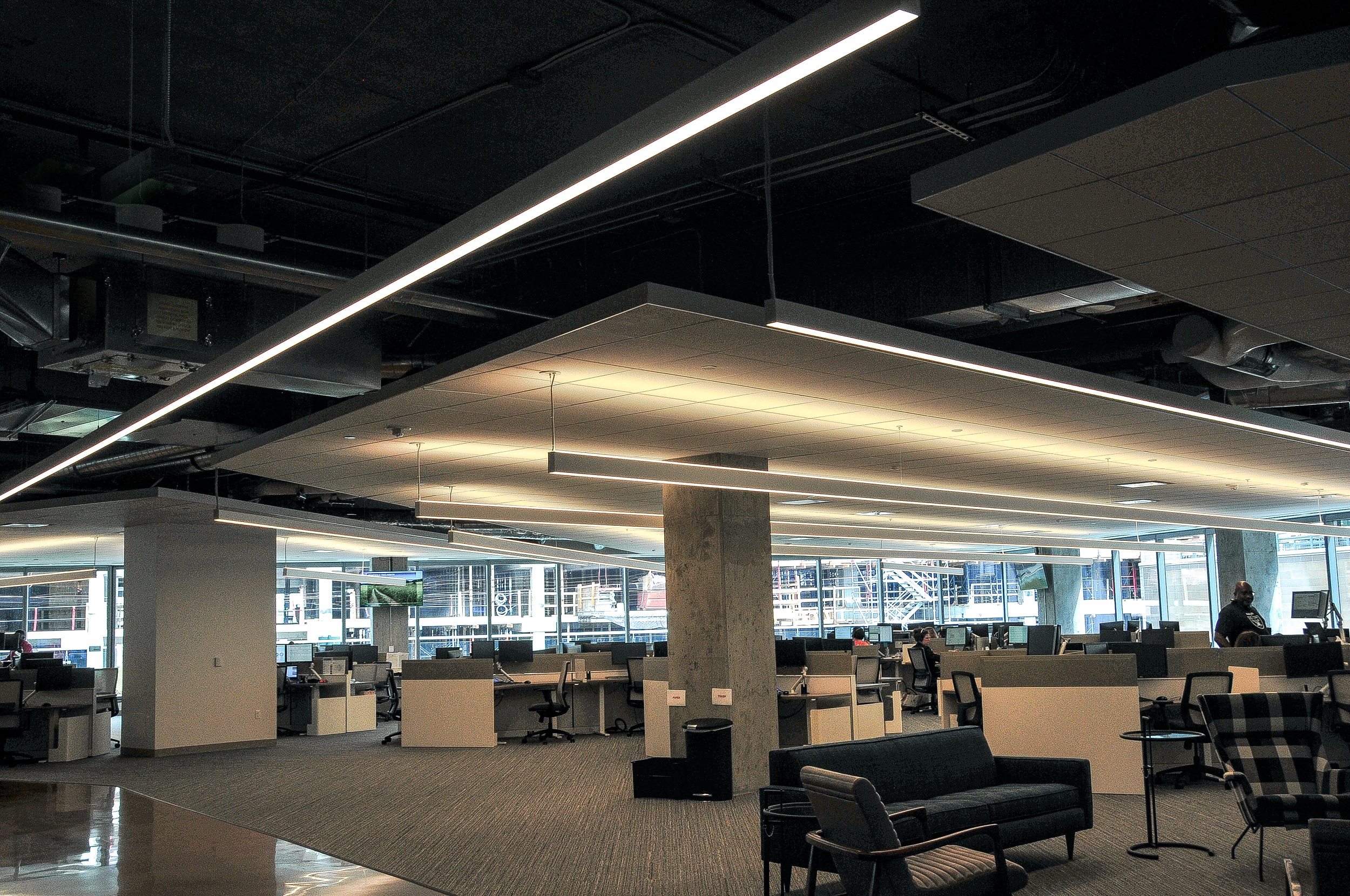What are “free address” workspaces?
Free address workspaces are spaces without assigned seating. They are growing rapidly in popularity, especially in the tech and accounting industries.
Why is this happening?
The accounting industry has embraced free address workspaces because they make unused vacant space available to other employees. In the past, when an accountant was out of the office at a client site, his/her space sat idle and unused. In free address space, unoccupied space is available for use by other employees. There are fewer desks than employees to account for this vacancy so less total space needs to be leased.
Tech firms have embraced free address spaces to exploit two of their other advantages: agility and increased employee engagement. As different teams form or dissolve over a project’s life cycle, the evolving team can sit together as required. And, employees may choose their optimal environment, e.g. quiet versus raucous or bright versus dark (as happens as Zappos). Often, these spaces are open plan with long rows of tables (“benching”) but they can also be comprised of private offices, lounge-like seating or workstations. Studies have shown that employees who have control over their environment perform better and are more satisfied with their jobs.
How does free address work?
There are varying approaches. Some companies use workspaces that are completely unassigned: employees can select any unoccupied seat. In others, reservations and check-in are done through an on-line or onsite system. For instance at JPMorgan Chase’s Manhattan Tech Centre, employees can review a floorplan, see available seats (as well as who is using the occupied seats) and then select their own seat for the day or reserve tomorrow’s seat — all from a kiosk at the space’s entrance.
At PWC, local managing partner Terry Sparks says they use a kiosk and even the partner offices – including his – are available to any employee. Sparks says that partners can reserve their own offices up to five days in advance to ensure they have access to an office when they are in, but he is pleased to see his office being used by others when he is not.

PWC Birmingham
At AirBNB and Github, workstation or benching seats are assigned to departments but unassigned within the department. Flexible soft-seating, outdoor spaces and kitchen/pantry areas are completely unassigned.

Github San Francisco
What are the negatives of free address workspaces?
Employees reluctant to embrace free address may camp out in one seat and leave their work product and personal décor in the workspace overnight/permanently. The problem with this is twofold: (1) no one else can use the space when that employee is not occupying it and (2) the intent is thwarted if the free address space has been designed to increase collaboration and random collisions.

LendLease Nashville
How do you decrease the likelihood of camping out? You can require free address desks to be cleaned up and vacated on a daily basis. Supervisors at some companies like LendLease gently encourage people to move around if they have been camped out in any one location for more than a couple days.
Another challenge of free address space is its dependence on a paperless culture. To the extent a company’s culture is not yet paperless, employees must clean up and store their paperwork in lockers or files until the next day rather than simply leaving their work out and ready for immediate action the next day.
Free address space can also be very sterile feeling. Because workspaces are not personalized with photos and other knick-knacks, space can feel spartan. This feeling can be minimized or avoided with good design and furniture selection. At one company, all new employees are given digital photo frames to personalize their work areas.

Free Address without personalization can feel cold.
Is free address workplace right for you?
That depends. Free address offers benefits for some lines of work, but can be a challenge for others. Sales functions lend themselves to free address because salespeople are often out of the office on calls. However, when they are in the office, they are usually on the phone and the resulting noise levels necessitate sound masking or enclosed spaces. Consequently, free address private phone booth-style space might be ideal for sales departments.
In an architecture firm where employees are working with different physical objects such as finish samples or floorplans, free address space could be too cumbersome as the daily clean up and close out of a space would be too time-consuming.
The best way to determine if free address might work for your company is to measure current seat utilization (i.e. what percentage of time is each seat occupied), understand the type of work done by different departments, gauge the fluidity of teams, and then beta test. Identify the department with the lowest seat utilization and try switching to free address for a defined period of time. Getting willing participation from that department will be key to its success, so make sure those employees understand and buy-in to the benefits. Monitor utilization through your reservation system. If the test space works, you can make a case to other departments to try it. Test. Analyze. Repeat.

